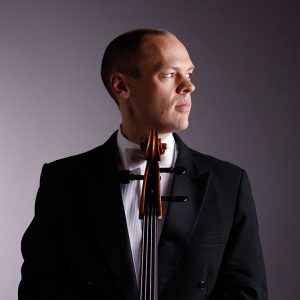
What’s the Passcode?
Brant Taylor
In the reader chats I’ve hosted on this website, certain discussion topics make frequent appearances. One of those topics, a question I hear often from students and other amateur musicians, is: “How do you practice?” It’s easy to see why. The assumption is that professional musicians must be great, or at least successful, practicers, and that insights into the habits of accomplished musicians should provide valuable information about how to improve and make the best use of practice time.
While I am always happy to share information about my own practicing, I always make an important qualification: practice is a personal thing. There is no one way to practice, no secret passcode to gain entry to the clubhouse of good cello playing or success in the music profession. You must design practicing around your individual needs. Student musicians can, and should, do this in consultation with their teachers.
Nevertheless, it is possible to speak about what is generally desirable in practice regardless of your level of study.
 While good practice can be defined in countless viable ways, here’s one to start with: Successful practice is work—yes, work—that helps you identify the sources of your individual problems so that you can solve them in a way that makes you aware of the most basic principles that underlie all good musicianship and instrumental playing.
While good practice can be defined in countless viable ways, here’s one to start with: Successful practice is work—yes, work—that helps you identify the sources of your individual problems so that you can solve them in a way that makes you aware of the most basic principles that underlie all good musicianship and instrumental playing.
It is possible to achieve results through practice while still being wildly inefficient with your use of practice time. For instance, learning one particular shift in one particular phrase in one particular piece is not a broadly useful achievement, unless you connect it to the larger aim of internalizing the elements common to all well-executed shifts.
It is also possible to practice to your own strengths and fail to directly address any of your weaknesses. We’ve all done it: playing through a section of music that we already have well under our fingers will always, in its way, be more pleasurable than delving into thorny, unfamiliar territory where the progress can seem much slower. (Of course, playing through something has a valuable place in the learning process, but perhaps not as often as we think.)
When I ask my own students about their practice habits, I usually hear about how their time is divided among a warm-up (scales, arpeggios, long tones, and other exercises), etudes, and repertoire. It is rare that I hear anyone mention deliberately making time for what I call unstructured practice. At some point when I was in music school, I was sitting in front of a practice room mirror and just began playing whatever came to my mind. Watching my hands, posture, and motions in the mirror, I quickly realized there was some value in practicing this way, and began to include it in my daily routine with immediately positive results. With or without a practice mirror, it was during this part of my practicing that I began to make important basic realizations about how I was connecting myself physically to the cello, where I was blocking myself with tension, when I was breathing (or not), and how applying different physical motions to the cello produced different results in sound. In instrumental playing, there is a strong correlation among things that look good, things that feel good, and things that sound good—and the contrary. I have found it easier to develop an awareness of these connections outside the context of difficult repertoire (or any repertoire at all), and recommend this type of practice to practically any instrumentalist.
Here are a few take-away statements and questions: good practice skills can be taught and learned. Practice is about your relationship with yourself, and sometimes your teacher, as well. There are many ways to practice successfully. How honest are you able to be with yourself about what your ears hear? Do you know how you really want to sound? (If not, can you really expect your hands to begin to produce those sounds?) What constitutes the greater achievement: learning a difficult new piece as quickly as possible with “old” habits or taking longer to study a simpler piece with a greater understanding of finesse and fluidity in your playing?
Next time: having done the last few blog entries on general topics, I’ll focus on a very specific, nuts-and-bolts discussion of one of the most often-studied orchestral excerpts in the cello repertoire.
Subjects: Practicing
